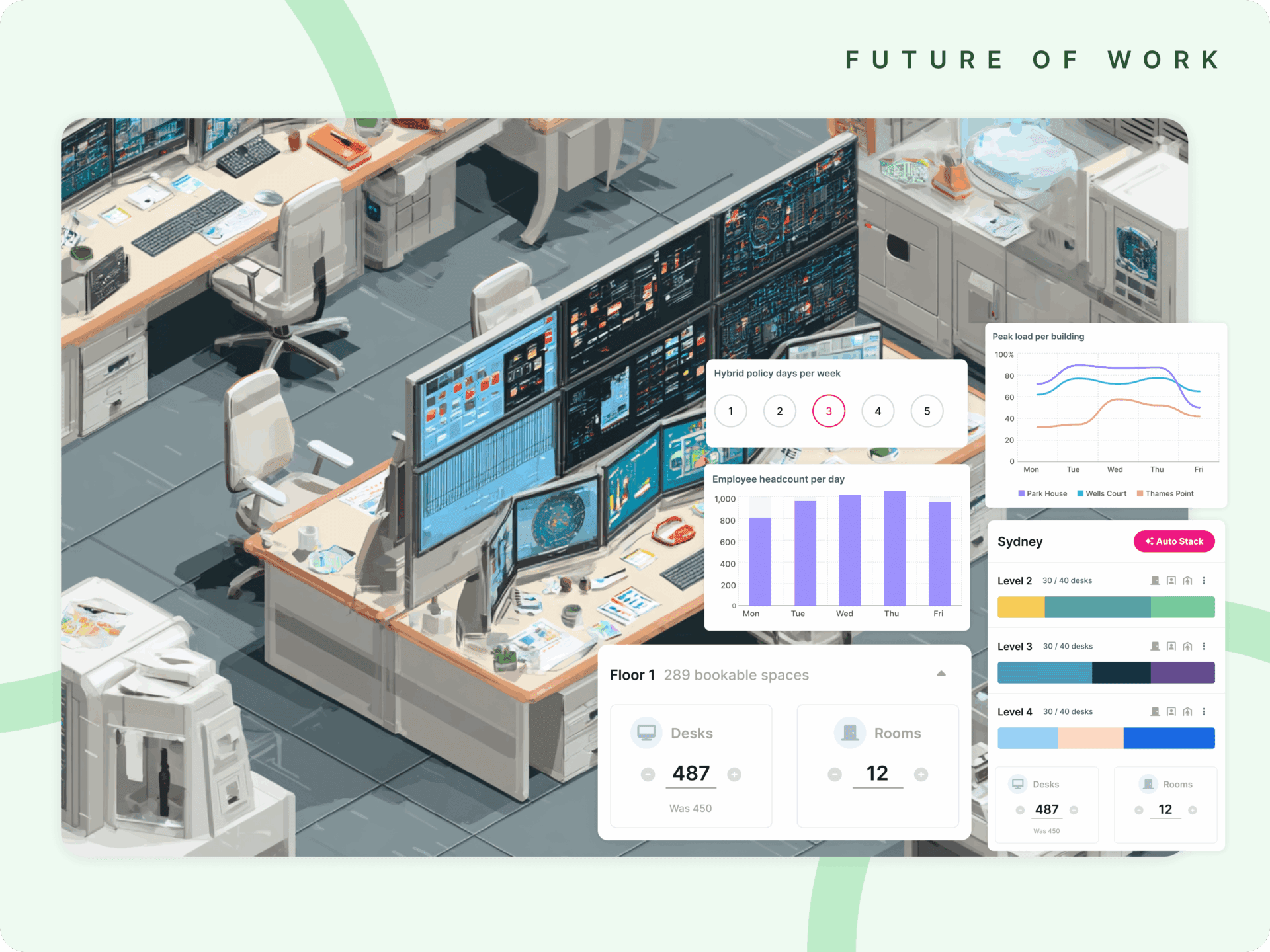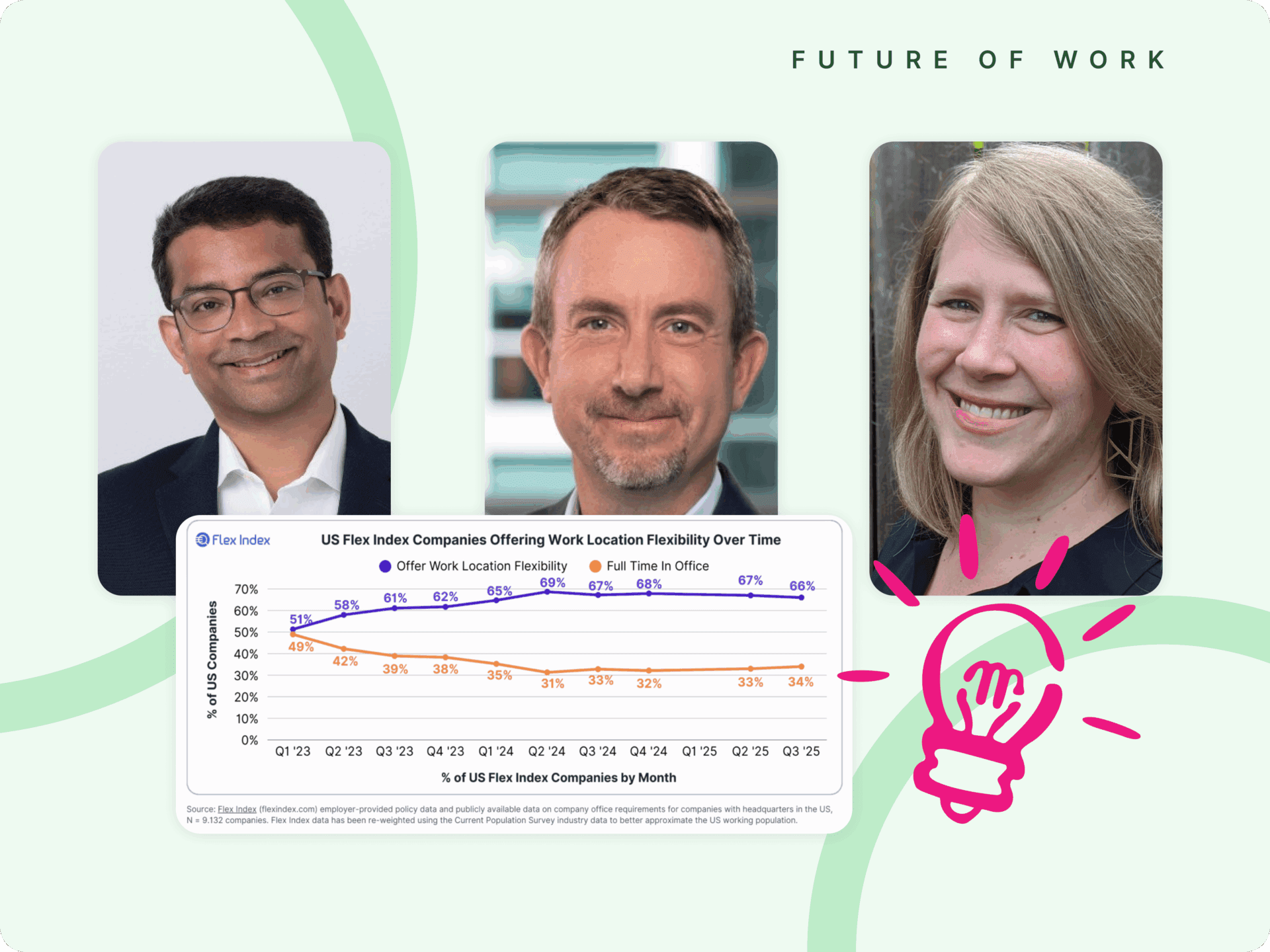Most offices today are still underused. Kadence data shows average utilization hovering between just 20 and 40 percent across industries.
The contrast is striking. Some organizations are beginning to fill their offices with purpose, while many remain half empty. What separates the two is not policy alone, but operations.
The way the world works has changed. The tools have not.
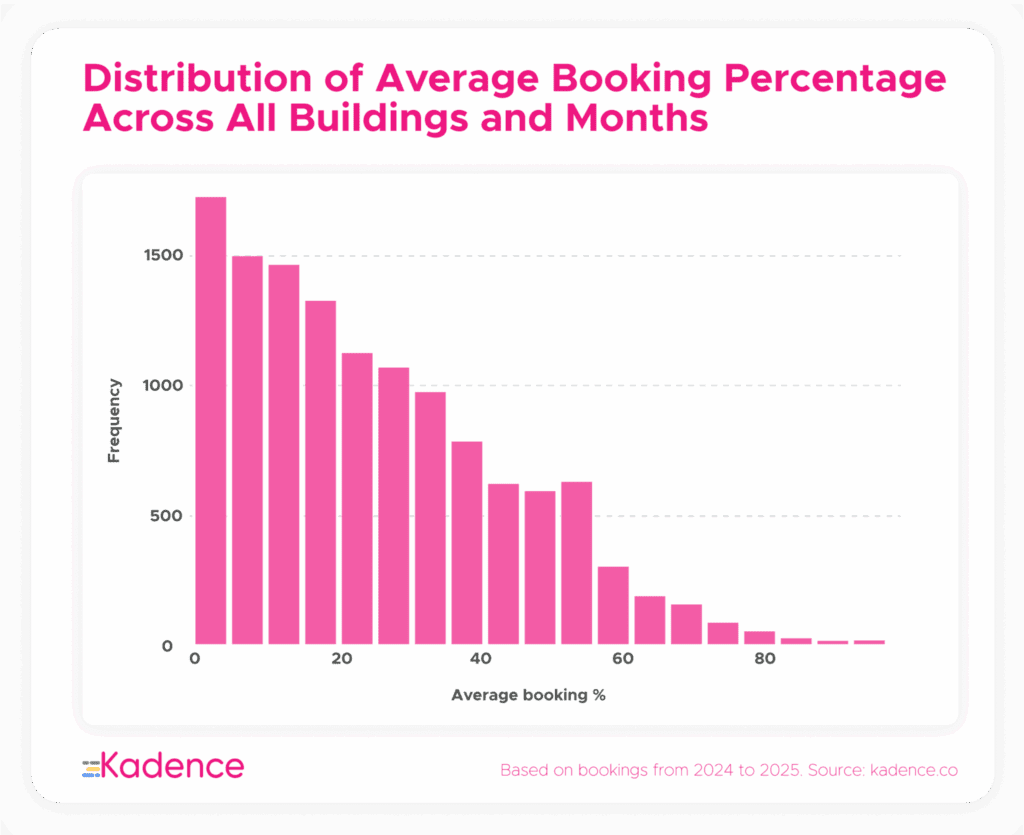
Why Space Operations Matters
Real estate remains one of the largest costs on the balance sheet. But every square foot now carries a different kind of weight. It is not only about cost. It is about what value the space creates, how it shapes culture, and whether it enables collaboration.
Space management was about allocation. Space operations is about orchestration. It means moving from tracking occupancy to actively designing environments that serve the strategy of the business.
Done well, space operations allows leaders to:
- De-risk multi-million dollar lease decisions with evidence instead of assumption.
- Orchestrate complex moves without operational chaos.
- Adapt quickly to growth, downsizing, or policy shifts.
- Build offices that reflect how teams actually collaborate.
It is where the tensions inside organizations get reconciled. CFOs want efficiency. HR wants fairness and experience. Facilities leaders want control. Employees want purpose. Space operations provides the common ground.
The Evidence Gap
Most offices remain underused, but the story is uneven. Some sectors are learning how to coordinate and create reliability.
Professional and business services firms now hit near-full capacity days of 97 to 100 percent on a regular basis. Healthcare maintains steady attendance across all five weekdays. Finance and insurance show a split, with some employees barely present and others consistently in the office at 50 to 60 percent. Manufacturing and industrial companies sustain high attendance, while media and entertainment continue to lag at the bottom.
The lesson is clear. High utilization is not the goal. Predictable and purposeful use is. Offices that peak midweek, or concentrate demand around certain teams, are not failing. They are showing rhythms leaders can design around.
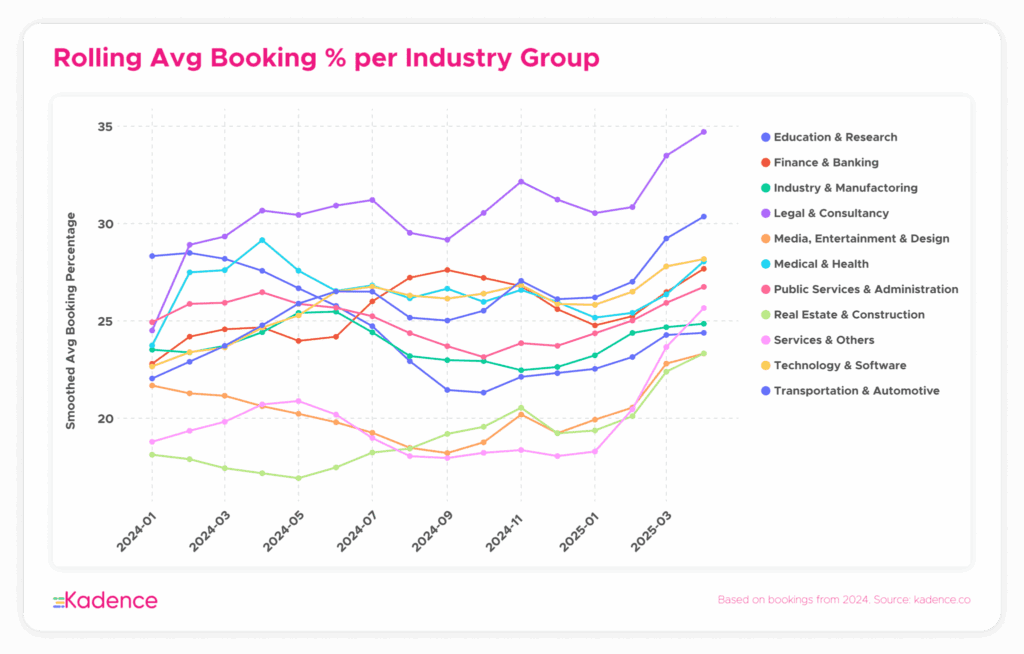
The New Mandate for Leaders
Space operations touches every part of the business.
- CFOs and real estate teams need to de-risk high-stakes lease decisions.
- COOs and facilities leaders need to eliminate operational chaos and orchestrate seamless change.
- HR and employees want fairness, flexibility, and spaces that reflect real usage patterns.
The challenge is that these perspectives often pull in different directions. Finance pushes for efficiency. HR pushes for experience. Operations pushes for control. Space operations is where these tensions are reconciled with evidence, not assumptions.
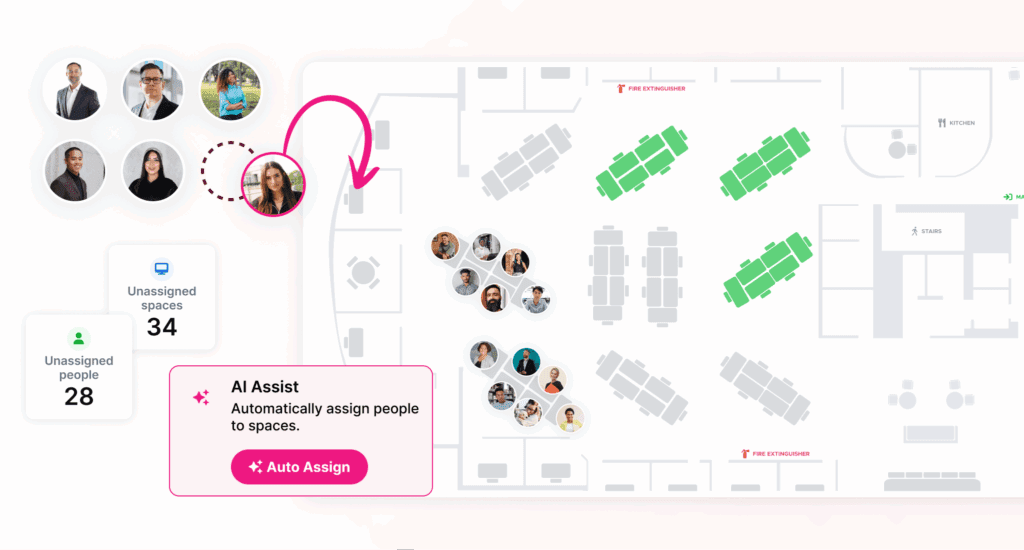
From Legacy Tools to Orchestration
Most workplace systems were built for stability. They assumed headcount would grow steadily, strategy would shift slowly, and the office would remain the center of gravity. None of that is true anymore.
Today teams merge, contracts end, and strategies pivot overnight. Employees expect workplaces that adapt in real time. Spreadsheets and static IWMS platforms cannot keep up. They leave leaders lagging behind reality.
What is needed is the same shift IT made years ago. IT support solved problems as they appeared, but IT operations began orchestrating proactively. The workplace now needs the same upgrade. Leaders must move from chasing overcrowded floors, empty leases, and last-minute moves to anticipating them. They need to model, test, and optimize scenarios before decisions are made. That is the promise of space operations.
Introducing Kadence SpaceOps
Kadence SpaceOps shows what space operations looks like in practice. It acts as the command center for workplace strategy, turning reactive tasks into proactive orchestration.
Imagine a CFO in Toronto weighing whether the company needs to expand. With scenario planning, they can model growth, test attendance under new policies, and see if current capacity holds up. Instead of negotiating leases on assumptions, they walk into the boardroom with a financially bulletproof plan.
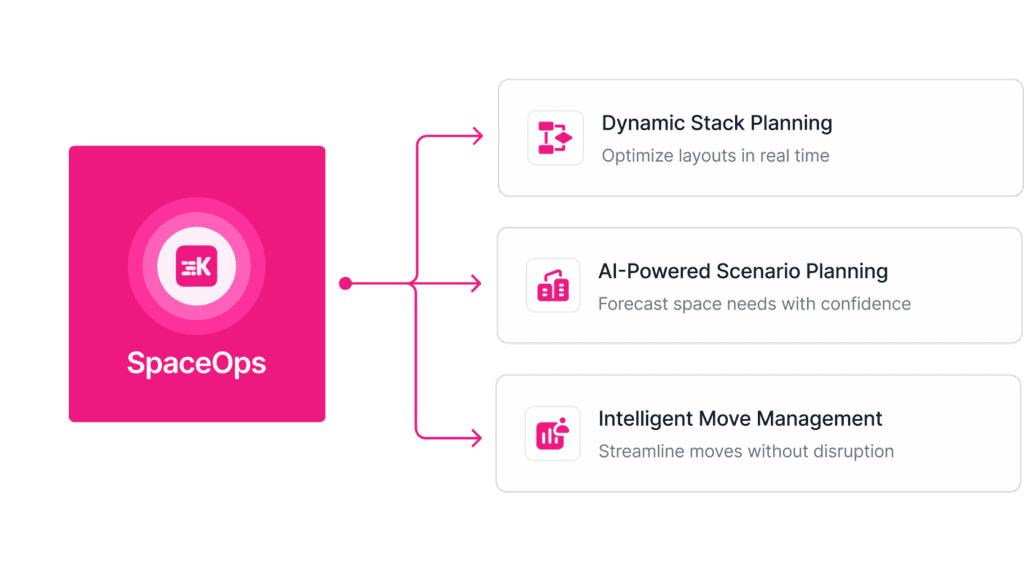
Or consider HR in London, forming a new product team and requesting twenty seats together. In the past, this would mean weeks of manual planning and weekend fire drills. With move management, facilities leaders can orchestrate the change in a single workflow. Employees arrive on day one with everything ready, and the business does not miss a beat.
And think about a real estate team in New York, looking to merge two departments onto one floor after a lease expires. Stack planning lets them drag and drop departments in real time, compare layouts, and choose the design that balances cost with collaboration. The decision is made before construction begins, saving money and minimizing disruption.
These are not product features. They are examples of what effective space operations looks like. Evidence-driven, people-centered, and aligned with strategy.
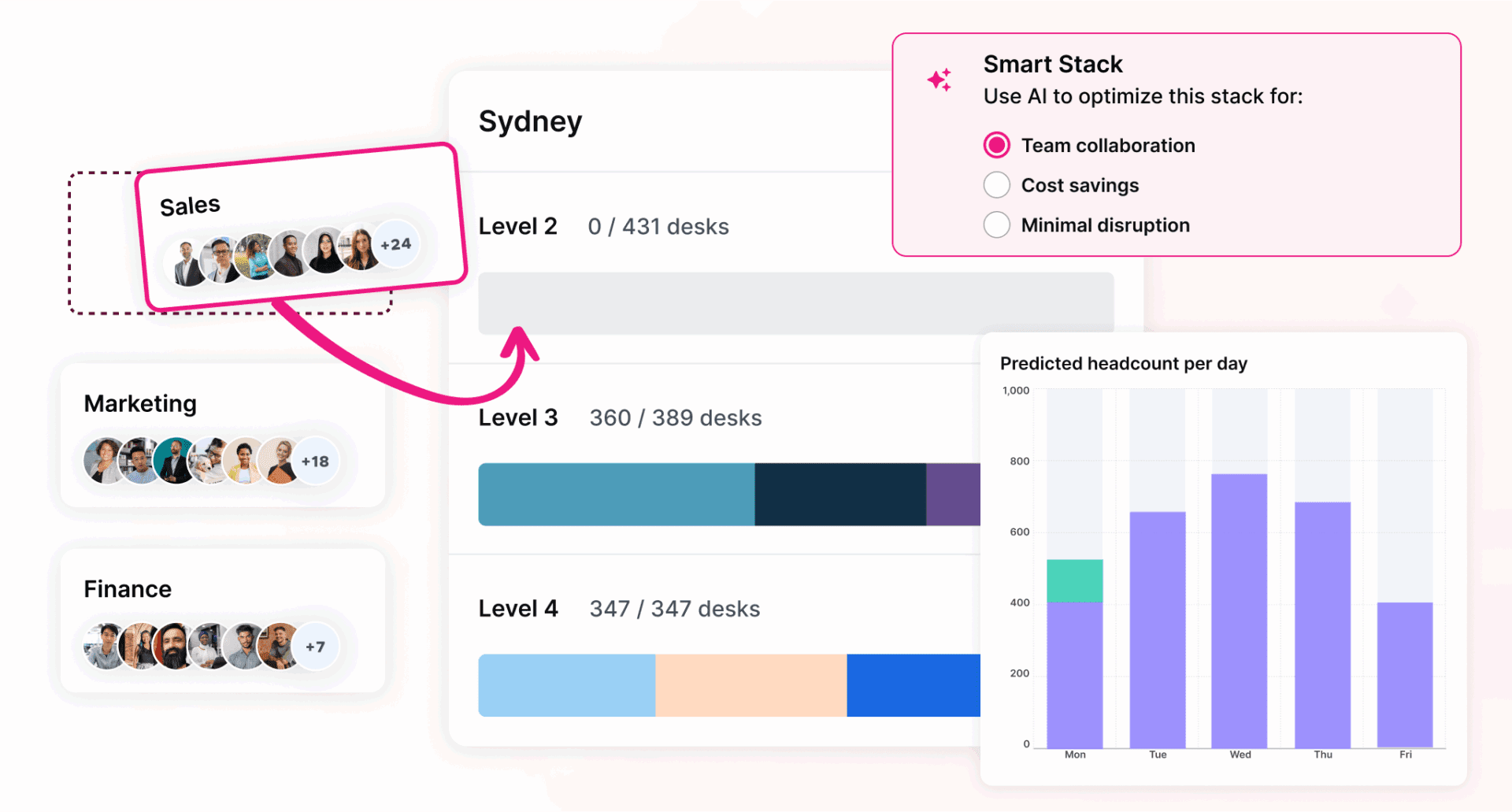
The Future of Space Operations
The office will never be static again. That should not be seen as a problem. It is an opportunity. Organizations that embrace space operations will not only reduce costs or avoid mistakes. They will create workplaces that are an advantage, not a liability.
SpaceOps is designed for that future. It gives leaders the command center they need to stop managing buildings and start orchestrating environments where their businesses can thrive.
Book a demo with our workplace operations experts to see how Kadence SpaceOps can transform your strategy.


